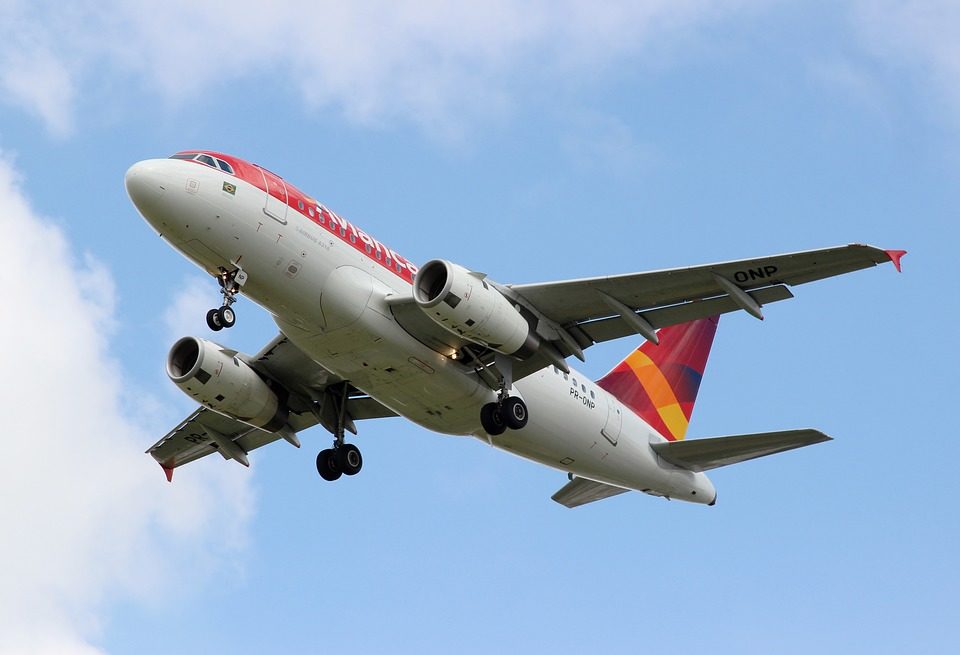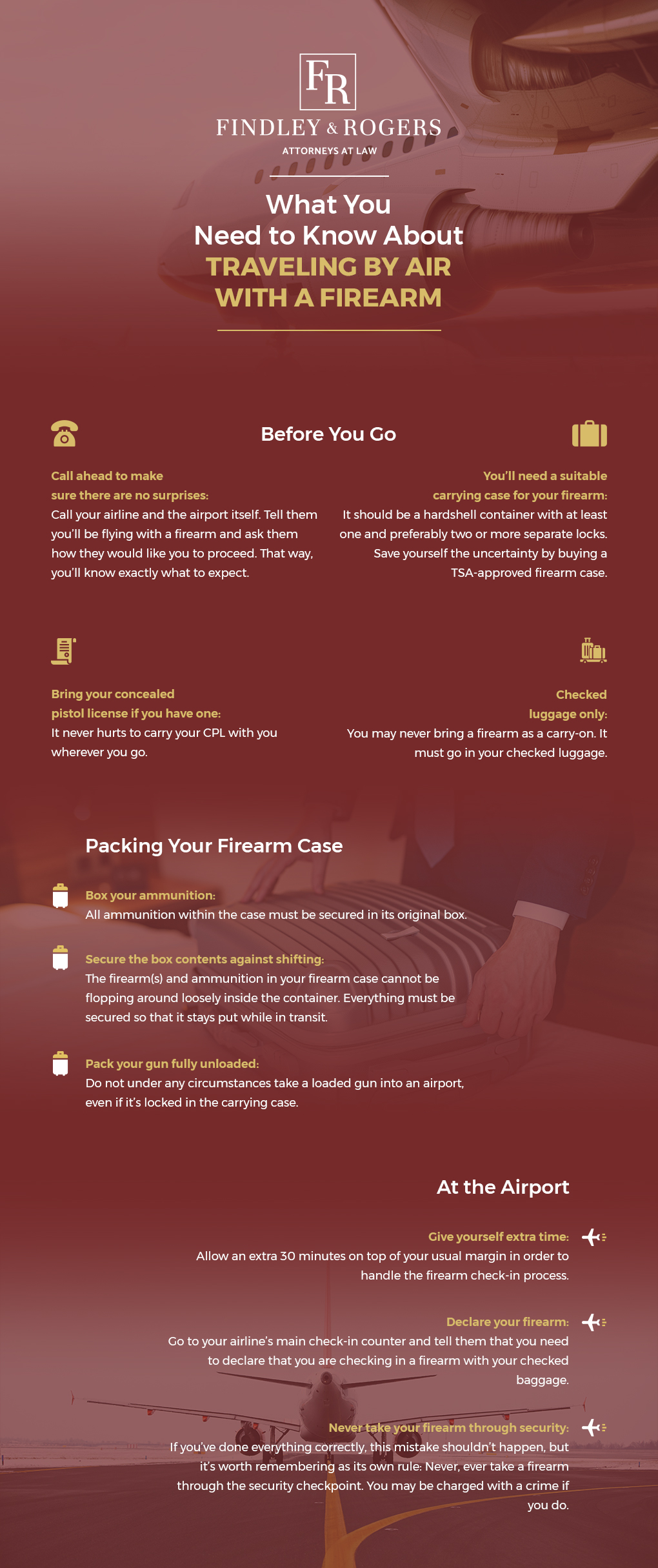Flying with a Firearm to or from Washington State: What You Need to Know
Flying with a firearm is something you can lawfully do, but only if you play by the rules. Mess up, and it can land you in jail. This is particularly true when flying with guns to or from Washington State, which has a law concerning the possession of firearms in an airport.
Here, you’ll learn how to fly with a firearm correctly with advice from the attorneys at Findley & Rogers
No Carry-On Firearms, Period
The first and most important rule of flying with a firearm is that you can’t take it in carry-on luggage. Absolutely no guns are allowed in the passenger cabin of a commercial airplane:
- You can’t carry a gun on your person.
- You can’t carry a gun in your carry-on luggage bags.
- You can’t carry a gun in your purse or computer case.
There are no exceptions and no excuses. If you show up at the airport security checkpoint with a gun on your person or in your bags, you’re going to have a very bad day: Your gun will be seized, and you may lose it entirely. You will be detained by the police, and possibly arrested. You may be fined thousands of dollars, and you may even face criminal charges.
Why are the rules for flying with a firearm so strict? Ever since September 11, the United States has taken airline security very seriously. Flying with guns on your person simply isn’t possible anymore, unless you’re a federal marshal or you’re flying in your own private airplane.
Federal and State Law
The TSA has a webpage on how to fly with a firearm, which includes a contact link if you have questions for them.
At the state level, Washington State has a law, RCW 9.41.300, that specifically prohibits guns in certain parts of an airport. This is important not only if you’re flying with a firearm yourself, but also if you’re dropping off or picking up a passenger and are lawfully concealed carrying. You are allowed to have a gun on your person in the unsecured areas of the airport, including the roads, parking areas, and the parts of a terminal outside of the security checkpoint. You’ll see clear signage when approaching a no-firearms area.
How to Fly with a Firearm Properly
Flying with a firearm in your checked baggage is legal as long as you are legally allowed to possess a firearm and you have no legal restrictions on interstate travel. Here’s how to do it properly:
1. Secure Your Gun and Ammunition
While packing for your trip, fully unload your gun and place it securely in a hard-shell container. The container should have at least one lock, but should ideally have two separate locks.
For an easier time, you may want to go with a gun case in favor of a utility box. Everything inside the case should be secured so that it doesn’t shift in transit.
- Tip: When choosing a container for flying with a firearm, you can save yourself some trouble by purchasing a TSA-approved firearm case. Manufacturers like Pelican produce cases specifically intended for air travel.
If you’ll be flying with guns as well as ammunition, place the ammunition in its original box (it’s okay if the box isn’t full), and secure that inside the hard-shell container too.
2. Declare Your Firearm
When flying with a firearm, allow an extra 30 minutes on top of your regular air travel planning times to deal with any firearm-related inspections or delays.
Go to your airline’s checked baggage counter at the front of the airport. Greet the attendant at the baggage counter politely and tell them something along the lines of “I need to declare an unloaded and secured firearm in my checked baggage.” The airline has a protocol for this, and they will guide you through it.
- Tip: If an airline staff member at the baggage counter asks you to open your sealed container, tell them that you are only allowed to let a TSA official inspect the contents of the case. Only open your container in the presence of a TSA officer.
Know Your Rights and Legal Status
Something else to be aware of before flying with a firearm is the status of your firearm rights. Many people can lose their firearm rights, due to things like a felony conviction, commitment to a mental health facility, drug addiction, and several other reasons. Before flying with guns, it’s critical to make sure that you are legally allowed to possess a gun.
For questions about your firearm rights and possession status, you need legal advice. At Findley & Rogers we are dedicated to helping the public exercise their firearm rights under the law. Some of our legal services include:
- Restoring lost firearm rights
- Getting your WA concealed pistol license
- Filing a NICS background check appeal
Get Legal Advice on Firearm Rights from Findley & Rogers
That’s how to fly with a firearm! Once you know the rules, it’s pretty easy.
If you have logistical questions about flying with a firearm, you can try calling your airline, as well as the airport. It’s also important to be aware of the firearm laws in the state at the other end of your flight, too.
Contact us today to talk about your situation in a free consultation!


